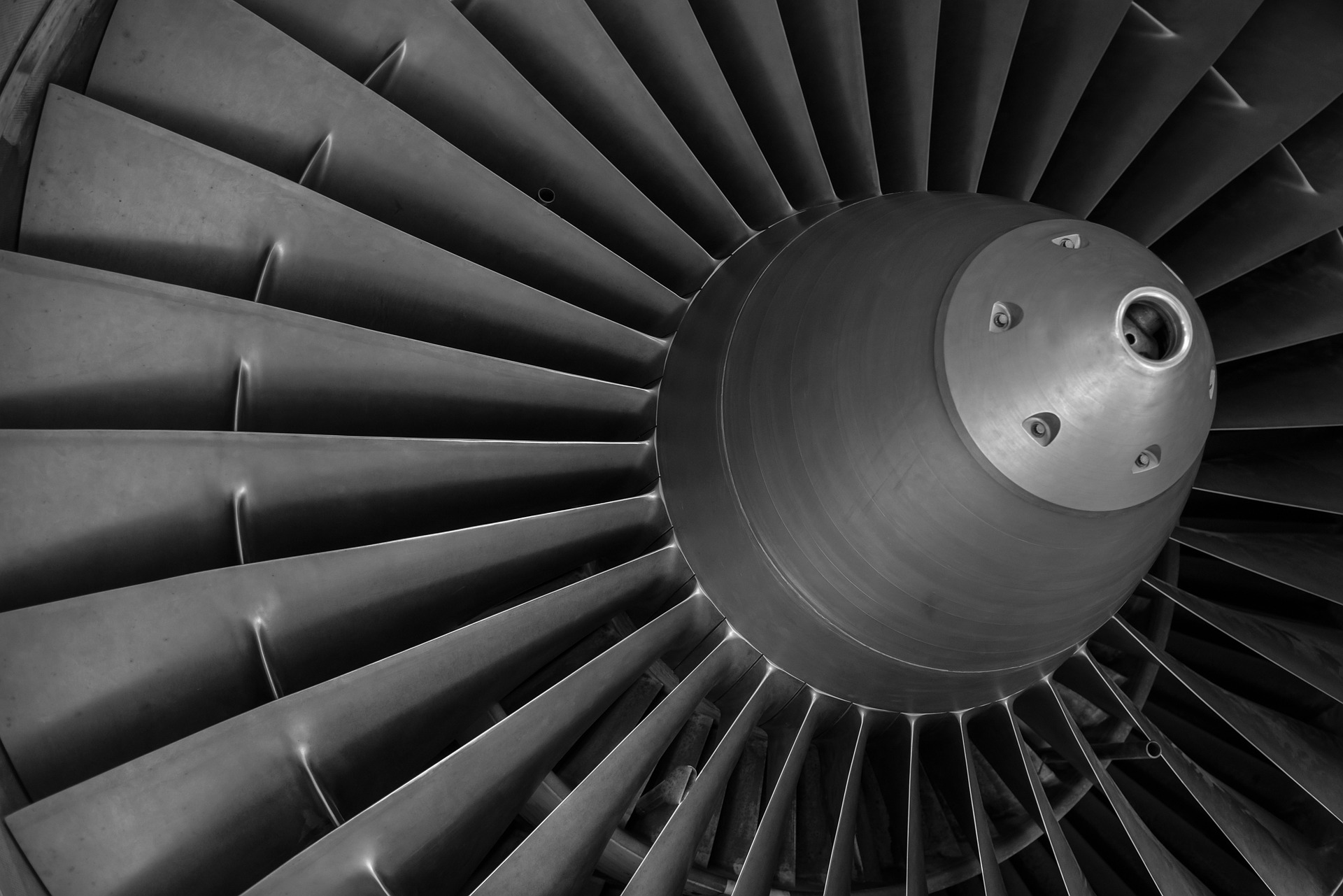
COVID-19: Use of excess jet fuel in automotive diesel fuel affects lubricity additive response
Lockdowns resulting from the COVID-19 pandemic have had far reaching impacts across the transportation industry and, with the aviation sector being particularly hard hit, refiners are blending surplus jet fuel into automotive diesel fuel. Infineum’s Paul van Munster, Technical Lead, and Dean Clark, Lubricity Venture Manager, recently explored the impact this practice can have on the response of diesel fuels to lubricity improver additives and explain why refiners and blenders should reassess their additive treat rates and consider the merits of both monoacid and ester technologies.
Multisol has worked in tandem with Infineum since 1990 and is its appointed distributor in Europe, Russia and the Middle East. The full Infineum Fuels Additives range is available now through Multisol as part of the ongoing collaboration, providing reliable, sustainable performance solutions that keep customers firmly ahead of the competition.
In the first quarter of 2020, as the coronavirus disease (COVID-19) began to spread across the globe, many countries introduced lockdown policies in an effort to slow infection rates. As a result of these measures, air travel has fallen dramatically and aviation industry analysts have reported that global scheduled flights were down by more than 60% from April to June 2020. And, it looks very likely that this situation will continue, with the International Air Transport Association saying that it expects flight capacity utilisation on average to be below 2019 levels by 40% in Q3 and 10% in Q4 2020.
Clearly, fewer flights mean there has also been a fall in demand for jet fuel. According to the International Energy Agency (IEA) in Q1 2020 world jet kerosene demand fell 1.2 mb/d from Q1 2019 levels. Again, this picture looks set to continue through the rest of the year, with IEA expecting full 2020 demand to be 2.1 mb/d lower than in 2019 – a 26% decrease.
Although jet fuel production in April 2020 was considerably lower than in January, over 1.6mb/d was still produced – almost 40% of which came from US refineries.
With little demand for this high value product, refiners are increasing the amount of kerosene in their finished automotive diesel fuel oil blends to use the excess jet fuel they produce.
Kerosene blending impacts diesel fuel lubricity requirements
Lubricity additives have been used in diesel fuels for many years to reduce wear on engine components and have now become a requirement in most diesel fuels to meet either the ASTM D975 or EN 590 global specifications. The performance of the fuel is determined using the high frequency reciprocating rig (HFRR), ball on metal test, which measures the diameter of the flattening of the ball after the test in microns (μm), with a lower result being better. Refiners traditionally manage various streams in fuel formulations to maximise yield while meeting these fuel specifications.
Infineum, a global leader in diesel fuel additive technology, has built up a deep understanding of diesel fuel behaviour in a variety of scenarios with its customers. While kerosene is routinely blended into US automotive diesel fuel to improve its cold flow properties, experience shows that both the level and type of kerosene used can impact the lubricity requirement of the resulting fuel. In addition, the increased amount of cetane improver that may be required to maintain cetane number may also increase the fuel HFRR severity in the relevant specification target applied.
To explore the impact of the use of excess jet fuel on the lubricity additive requirement of automotive diesel fuel, Infineum initiated a HFRR study to examine a number of blending options.
The following fuels were blended so that the impact of both adding different types of kerosene and adding cetane improver could be assessed.
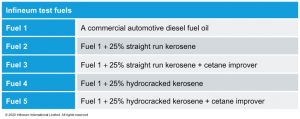
Adding the straight run kerosene to the diesel fuel had little effect on the amount of ester lubricity improver needed to meet the EN 590 HFRR specification limit of 460 microns. However, in this test fuel, a significant increase in the treat rate for the monoacid technology was required to meet this target.
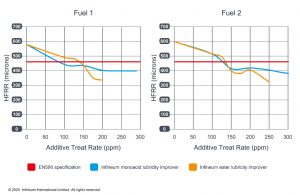
When hydrocracked kerosene was added to the diesel fuel (Fuel 4) just a small increase of monoacid or ester lubricity improver treatment was necessary to meet the EN 590 HFRR specification. Finally, when both of these diesel fuel / kerosene blends were treated with cetane improver, further lubricity improver treatment, whether monoacid or ester, was needed to meet the 460 micron target.
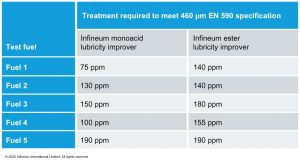
In this most demanding situation, with added cetane improver, the monoacid chemistry demonstrated a flattening of the response curve around the 460 micron specification level.
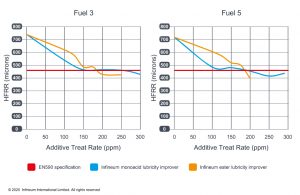
However, to provide a safety margin, in order to counter the poor repeatability issues associated with the HFRR test, it is advisable to aim for a 400 microns result in the HFRR test. Ester technology maintains its capability to provide HFRR performance down to this level, while monoacid chemistries may struggle to go below 460 microns.
Conclusion
It appears that the repercussions of the COVID-19 pandemic will continue to be felt for many months to come. The negative impact on the aviation industry is forecast to continue, albeit at a less severe level, for the rest of 2020. Refiners are likely to keep on blending the resulting surplus jet fuel into automotive diesel fuel.
While the addition of jet fuel to diesel fuel might have some positive cold flow performance benefits, the potential need for cetane improver treatment increases the lubricity severity of the final diesel fuel by as much as 50%.
The careful selection of lubricity additives plays a much larger role in these troubled times. Refiners and blenders must carefully assess the performance of these new diesel / kerosene blends and revise additive treatments to ensure the EN 590 specification HFRR target is met. This becomes more pronounced if the refinery has 400 micron limits and is using monoacid technology. Refiners using ester-based lubricity improver technology, will use its deep treat capability in these new blends, albeit at a larger treat rate, to ensure a more robust safety margin can be maintained despite the increased jet fuel use.
To download this article in full, visit the downloads section of the Multisol website.
For more information on Multisol’s market-leading range of Infineum products, visit the products section of this website or contact us to find out more.